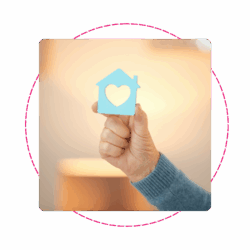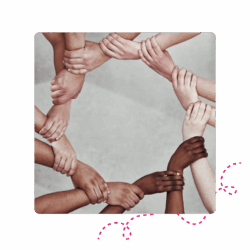The Role of Technology in Supported Living Environments
Overview of Technology in Supported Living:
Technology has become a vital part of supported living environments, as it enables providers to deliver better, more responsive care to their service users while transforming how services are planned, delivered, and evaluated.
The primary goal of supported living is to help people lead fulfilling lives from the comfort of their own homes, whilst maintaining as much independence as possible.
At the heart of the technological transformation that is helping to achieve this goal for supported living providers are digital care management platforms that bring care planning, documentation, communication, and reporting into one centralised location.
Supported living management software comes packed with tools to simplify the day-to-day running of services, freeing staff up from admin work, and empowering them to do what they do best: deliver excellent care to their service users.
Additionally, these systems ensure that information is up-to-date and accessible by automatically updating and notifying all relevant stakeholders once a change has been made.
Modern supported living platforms also come with support for mobile access, reducing the duplication of work and making sure key up-to-date information is available whenever and wherever required.
These platforms also play a pivotal role in improving communication between care teams, service users, and their families through extensive built-in instant communication functionality.
Combined with a shared centralised view of each service user’s care journey, key stakeholders are empowered to make informed decisions faster, strengthening trust and ensuring care planning is a collaborative process.

Supported living platforms track patterns over time, turning data into actionable insights that care teams can use to easily identify trends, reduce risk, and be more proactive when delivering care.
Given that everyone’s needs are different, these platforms need to be highly configurable, allowing providers to easily adapt to changing circumstances over time and consistently deliver a high standard of person-centred care.
Managers also need to be able to easily track compliance, identify gaps in care delivery, and monitor staff in real-time, empowering schedulers to be more responsive, without the need for constant supervision.
These platforms also play a significant role in the day-to-day lives of staff by minimising ambiguity, which helps to effectively prioritise and manage tasks and to ensure all activities are completed in accordance with the care plan of the service user and general operational guidelines.

Impact of Smart Technology on Daily Living:
Smart home technologies, such as motion sensors, automated lighting, and smart thermostats, are becoming increasingly important components of supported living as they help create safer, more responsive environments, which can increase the level of independence of service users.
These tools enable care teams to identify potential risks in real time, allowing care teams to respond quickly, whilst still maintaining a certain level of independence for service users.
Smart devices allow service users to manage lighting, heating, reminders, and entertainment systems with ease, promoting a greater sense of independence for individuals with limited mobility or cognitive disabilities.
For service users who benefit from having a regular routine, such as individuals with Autism or Dementia, smart devices can be easily configured to mirror the individual’s routine.
This consistency provides a greater sense of comfort and independence for service users and reduces the pressure on care teams to manage all aspects of the individual’s routine manually.
Smart technology is a powerful tool when connected to supported living software, as information such as risk alerts and routines can be fed directly into a service user’s care record in real-time, giving care teams a greater insight into the service user’s day-to-day life.
As a result, care teams can better identify trends, proactively adjust care delivery to meet the needs of the service user, and offer a more personalised care experience, all within one centralised system.

Wearable Technology and Health Monitoring:
Wearable technologies such as Smart Watches and Blood Glucose Monitors are becoming an increasingly important part of supported living services as they help care teams monitor service users’ key health metrics, manage medical emergencies, and proactively tailor care to individuals’ unique needs.
This technology tracks a range of key service user data points, such as heart rate, activity levels, sleep quality, blood sugar level, and even temperature, empowering care teams to proactively identify trends and quickly adjust care delivery before the issue worsens.
Additionally, for service users who are prone to wandering off, GPS-enabled devices come with geofencing functionality, allowing key stakeholders to set a designated safe zone and customised alerts that trigger once the service user leaves said area.
By feeding data from wearable technology into centralised supported living platforms, care teams are better equipped to make more informed decisions during assessments, handovers, and during medical emergencies, without needing to check multiple different systems.
However, it should be noted that, as with any technology in care, data security is essential. With wearable devices gathering sensitive data on an individual, service providers must ensure that all data is handled securely in line with national data handling regulations.
Consequently, providers are required to gain informed consent prior to the collection of any personal data. Additionally, providers can only gather relevant information and must ensure that both staff and service users fully understand how the data will be used to support care planning and delivery.

Barriers to Adoption and How to Overcome Them:
Implementing new software or bringing a new technology into a care service can transform service delivery; however, oftentimes, it is not as simple as plugging something in or signing into an app.
Care providers face real challenges such as budget constraints, strict regulatory requirements, differing levels of technological literacy among staff, and the need to get buy-in from their staff, to name just a few.
One of the biggest barriers to adoption faced by care providers is the cost of purchasing and implementing a new piece of technology, so it is essential that providers carry out thorough research and look for technology providers within their budget, while still being able to provide all the required functionality.
Additionally, smart devices and digital platforms, such as supported living software, require stable Wi-Fi for them to run smoothly, so care providers should ensure that they have a stable internet connection in place or that the platform can run offline when and where required.
When researching potential new tech, providers should also consider the level of ongoing support and updates the system will receive.
Technology needs a certain level of ongoing support, frequent updates, and a quick resolution time for any issues within the system, as there is no point having a piece of tech with all the bells and whistles in place if it consistently requires troubleshooting or your staff can’t use it to their maximum potential.
Another barrier preventing care providers from implementing new technology is the staff’s reluctance to change, which can be caused by a number of factors, such as the technology itself being too complex, they’re more comfortable using methods and technology that they have previously used, and, oftentimes, generational attitudes to technology.
As a result, it is crucial that providers involve staff in the purchasing process as early as possible, ensuring they have adequate time to voice their concerns and identify any limitations that could hinder them from delivering high-quality care.
Additionally, when providers are researching a new piece of technology, they should choose platforms that can grow with their organisation, support additional services, and adapt to regulatory changes without requiring a significant overhaul.

Future Trends for Technology for Supported Living:
As technology and supported living platforms continue to evolve and improve, there will be an increase in the availability and reliance on wearable health technologies as they can provide care teams with additional health information, which can be used to further personalise care plans.
With wearable technology becoming more advanced, providers are better able to monitor and track key health metrics around the clock, allowing them to be more proactive in identifying trends and potential health incidents that could occur.
As these platforms and technologies continue to evolve, there is a greater opportunity for providers to fully integrate wearable health technology into their system, giving them a greater wealth of service user data to inform data-driven processes, such as care planning and risk assessments.
The rise in AI and machine learning has provided care teams with additional tools to help plan and deliver high-quality care, with AI-powered run-route optimisation and AI care note summaries already proving to be highly beneficial.
However, as AI continues to become more advanced, there is a greater opportunity for future developments to improve care planning, automate communication, and predict health trends, to name just a few.
GP Connect has the potential to have a transformative impact on the social care industry in England by enabling authorised health and social care providers to seamlessly access and share service users’ information between different health and social care settings, ultimately improving the standard and continuity of care delivery.
With GP Connect being continually developed and improved, once it has been rolled out across the wider UK, there will be ample opportunity for providers to incorporate additional service user data into the care planning and assessment processes.
Book a demo with OneTouch Health to discover the benefits of implementing a comprehensive, all-in-one care management platform into your supported living organisation.

